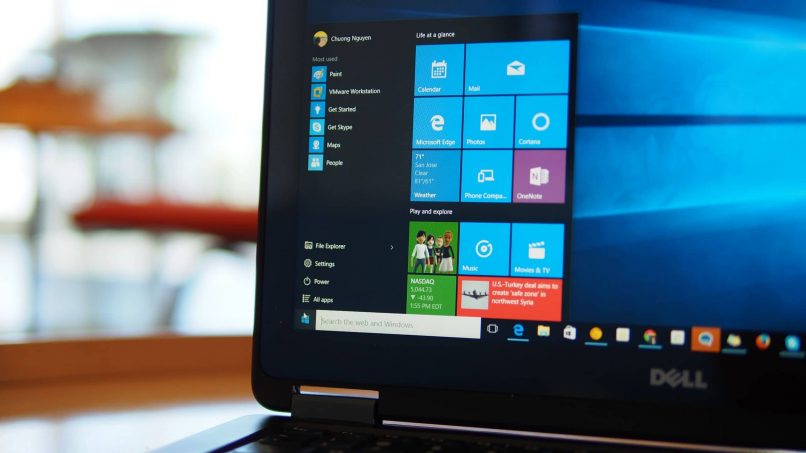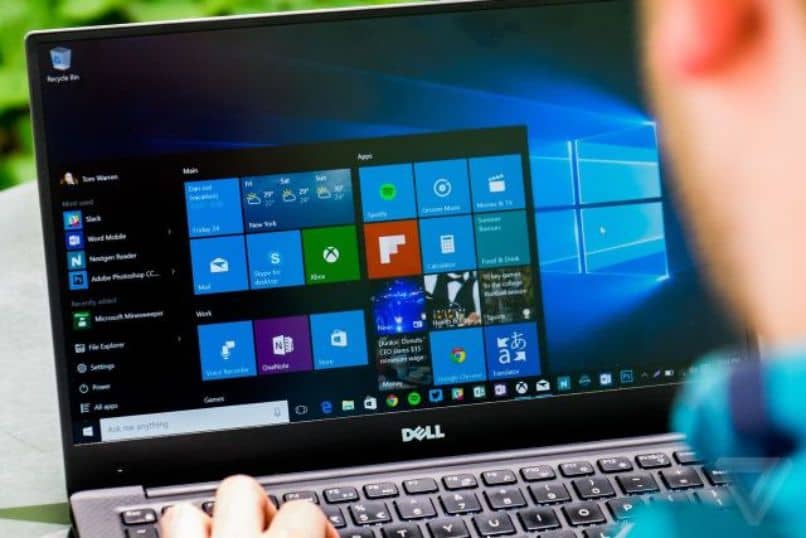Next, we are going to see how to program the automatic shutdown and startup of my Windows 10 PC. Since Windows allows us to program automatically so that our computer turns off and on when we want.
We will see a simple tutorial for you to learn how to program your computer to turn itself off and on completely automatically.
One problem that you may encounter when shutting down your computer is that open tasks block the computer from shutting down, which is why it is important to know how to prevent this from happening beforehand.
How to schedule automatic shutdown in Windows
through run
We have several options when it comes to programming the automatic shutdown of Windows. So we are going to browse through each of them and you can choose the one that best suits you.
The first is through “Run”. For this you will simply have to click on “Start” in the lower left part of Windows, type “Run” and then press enter.
A small window opens and here you must write shutdown -s -t “number” between the quotes (the quotes do not go) you will have to put a number that will be seconds. Obviously if you want to configure it to turn off on time you should put “shutdown -s -t 3600″ and so on.

With the command console
To run the Windows command line, simply press the “Start” button at the bottom left of the screen or the “Windows” key on the physical keyboard. After this type “CMD” and press enter. You will get a black screen which is Command Prompt
In said command console we are going to enter the same command that we saw above shutdown -s -t “number”. It’s basically the same as what we explained a little above, but doing this from the command console. Another way to improve the shutdown of your computer is to speed up the shutdown.
With task scheduler
- If you type “Tasks” in the Windows search bar, the Windows “Task Manager” appears. Here you will have to choose “Create a basic task” and you can name it whatever you want. Ideally, it should be something like “Auto Power Off” or similar.
- The task manager will allow you to set this on a daily or one-time basis. Decide which option you need and then press continue.
- Then you will have to configure the date and time that you want Windows to turn off automatically and then press next.
- Here comes the fundamental part so that the computer really turns off. You’re going to have to link a file to the task we’re scheduling. What file are we going to link? Precisely the “shutdown.exe” that is to turn off the computer.
- This file is located in C:/Windows/System32. This will be where you find shutdown.exe you must select that file.
- We’re not done yet because you’re going to have to add the -s argument and then hit next. Now you have programmed in detail when the computer will turn off automatically.
You can also set a timer so that your computer turns off at a certain time.

How to schedule auto power on in Windows
- We start by entering the BIOS. You must bear in mind that for this it is essential to restart the computer and you must have a key to restart it, which is different on some computers.
- After entering the BIOS you will have to look for the “Advanced Options” tab (each BIOS is slightly different so you will have to look for similar options and be guided).
- Then you will have to search for “Power options” or “Power options” something that will refer precisely to these options. Here we will have to look for the power options.
- Remember that not all BIOSes are the same. So you may have to go to another section to find the power options.
- Now you must look for the “Autor Power On” option, which is for self-ignition and you must enable said option. After this you will have to choose the date you want it to turn on.
- In some BIOS you have the possibility to configure it by date both by “Date”, “Time” and “Mode” which allows you to configure if you want a specific day or every day at a specific time.
To finish, you should proceed to save all the changes with F10 generally and restart the computer. Remember that not all BIOSes are the same.












